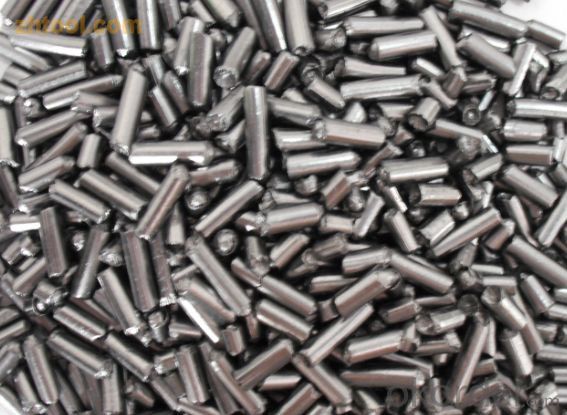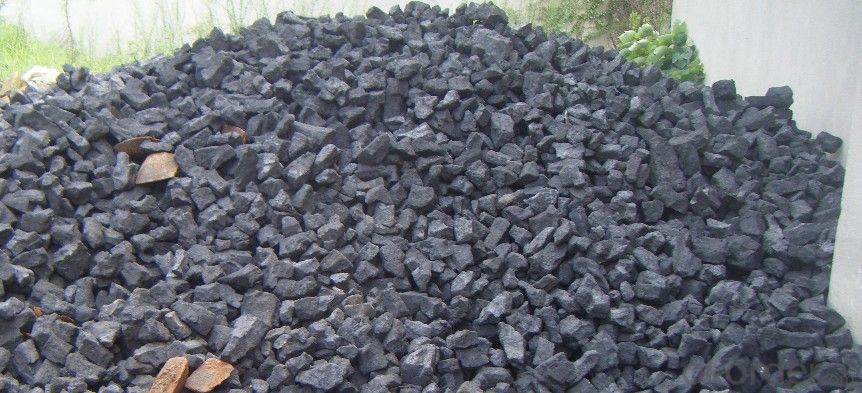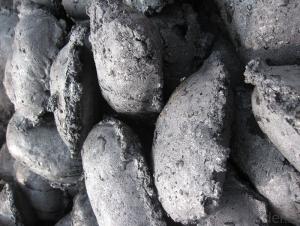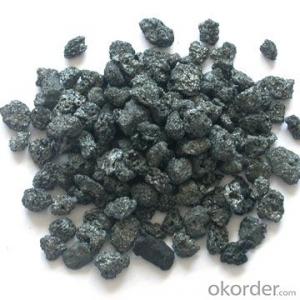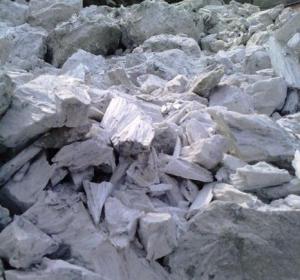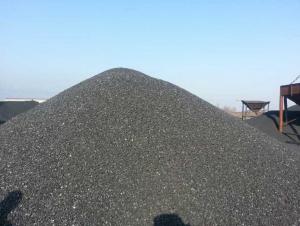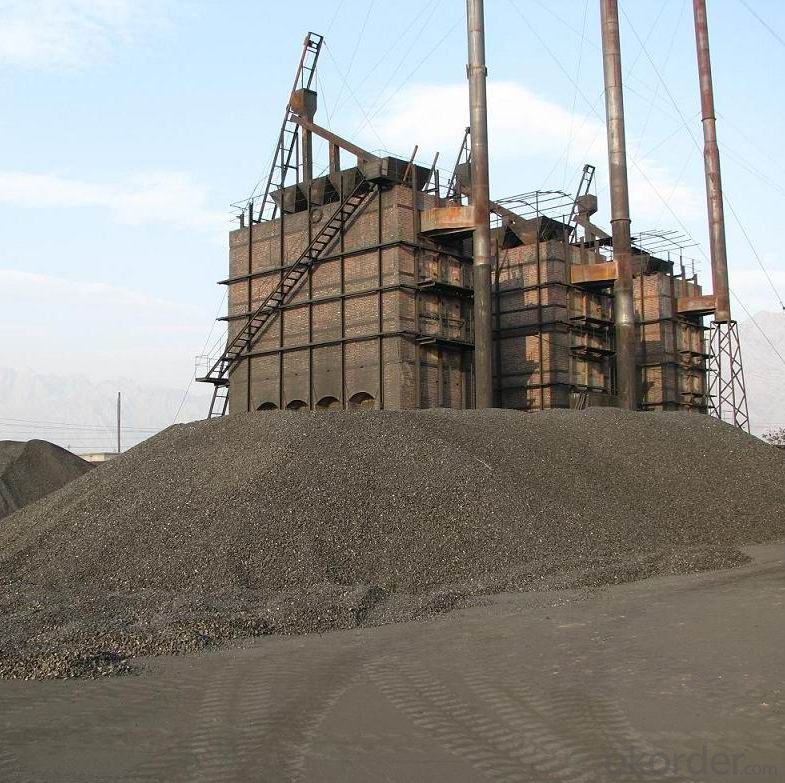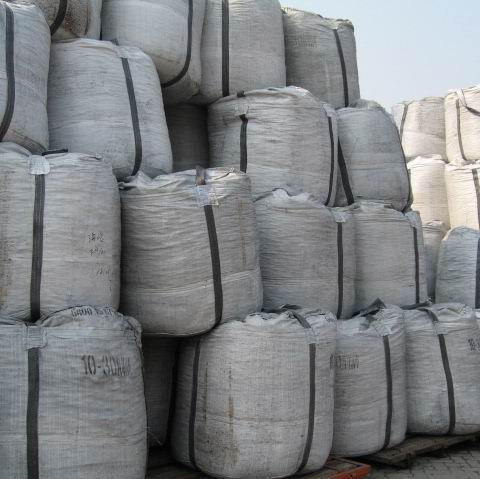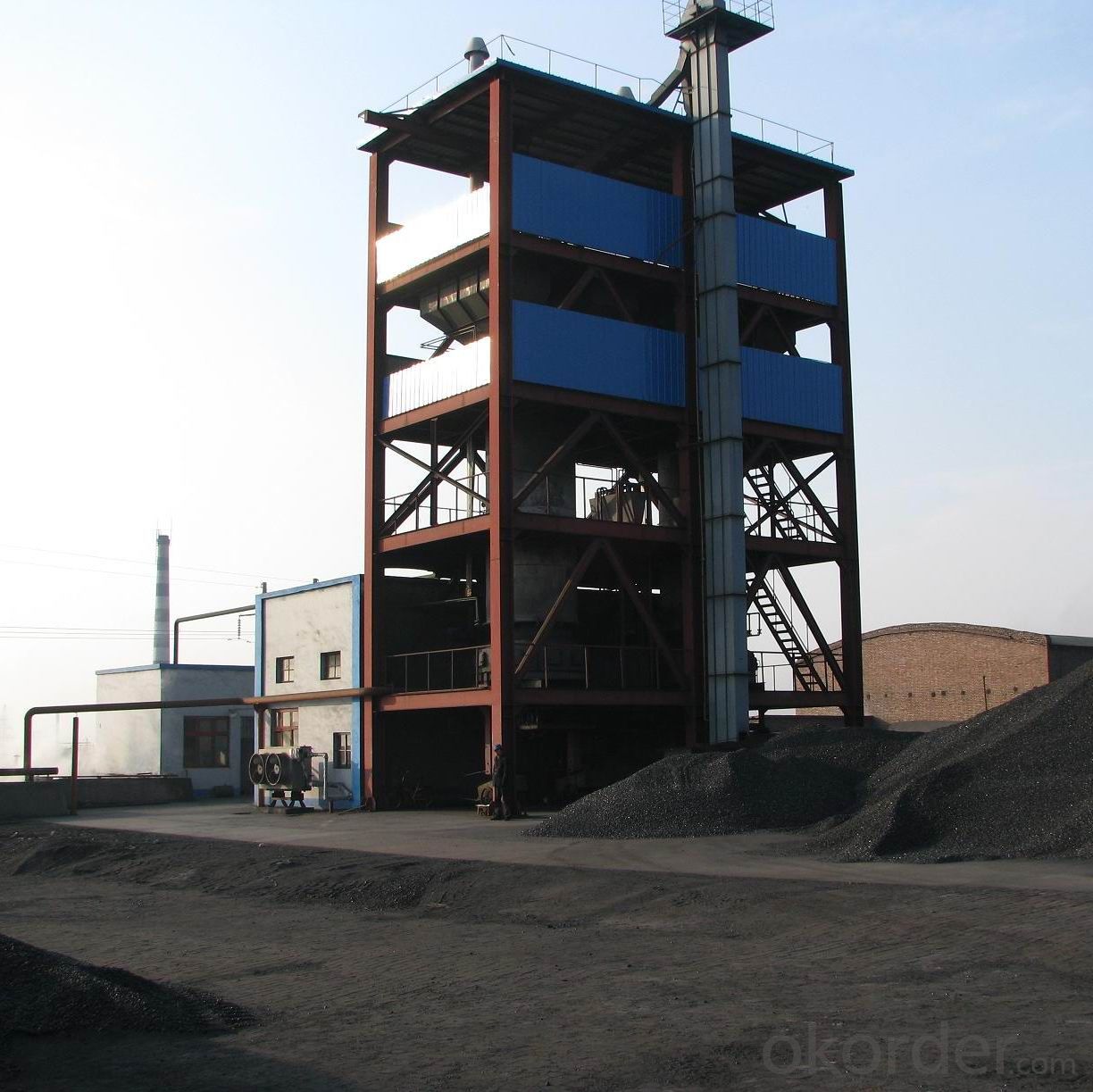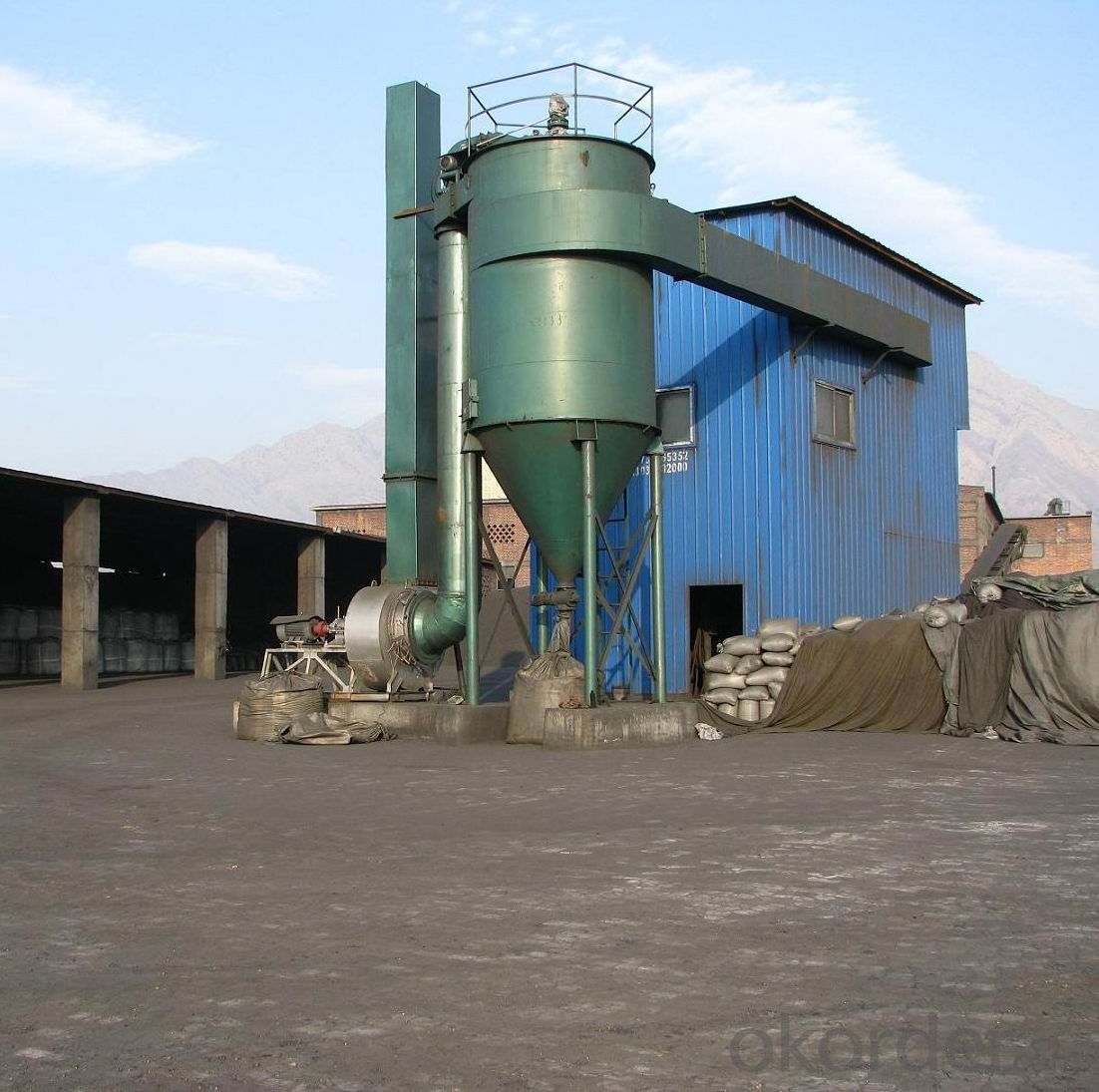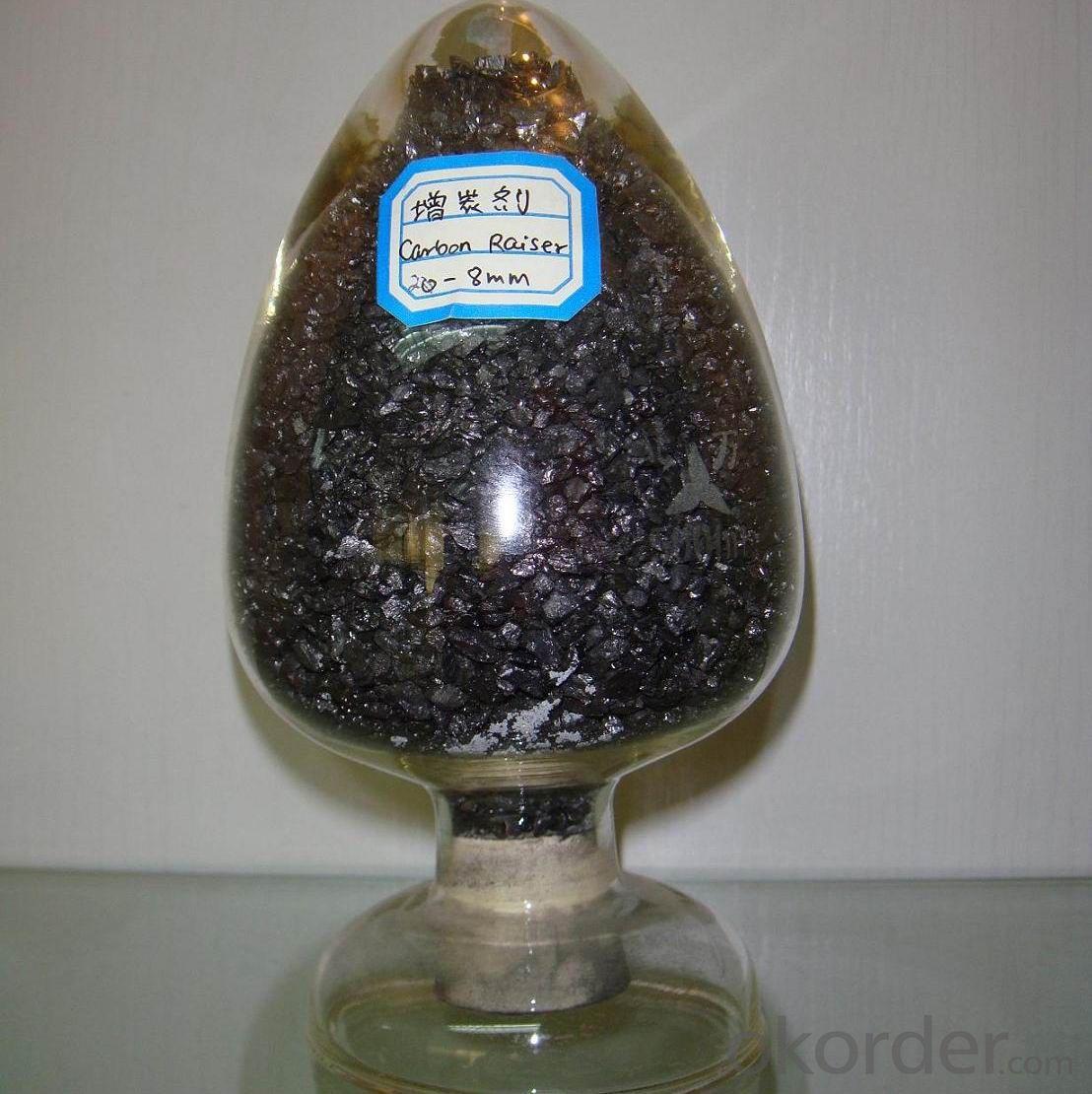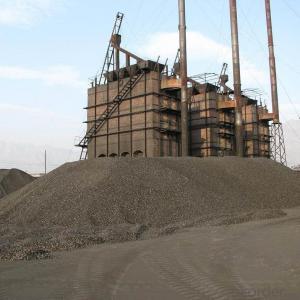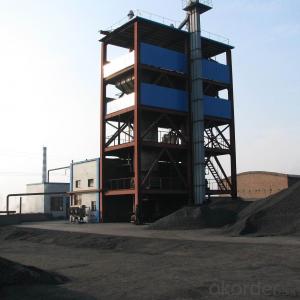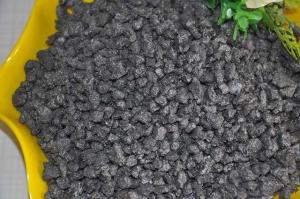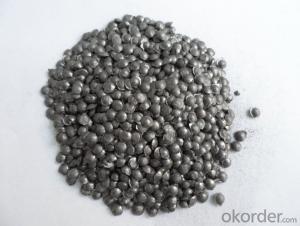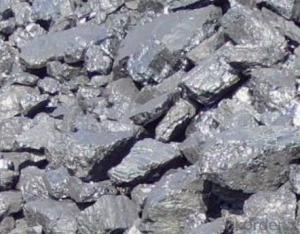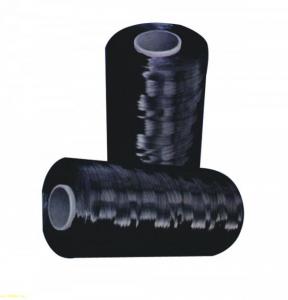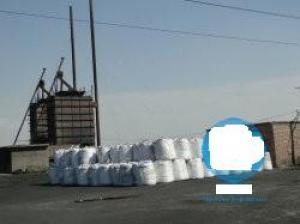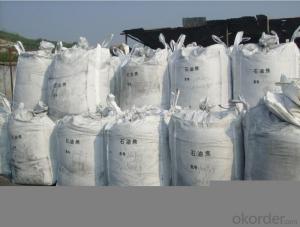Carbon Additve Recarburizer for Steelmaking
- Loading Port:
- Tianjin
- Payment Terms:
- TT or LC
- Min Order Qty:
- 20 m.t.
- Supply Capability:
- 10000 m.t./month
OKorder Service Pledge
OKorder Financial Service
You Might Also Like
Quick Details
Place of Origin: Ningxia, China (Mainland)
Application: steel making
Shape: granule
Dimensions: FC90-95%
Product Type: Carbon Additive
C Content (%): 90-95% MIN
Working Temperature: -
S Content (%): 0.5%MAX
N Content (%): -
H Content (%): 0.6%MAX
Ash Content (%): 8.5%MAX
Volatile: 2%MAX
ADVANTAGE: low ash & sulfur
COLOR: Black
RAW MATERIAL: TaiXi anthracite
Packaging & Delivery
| Packaging Details: | In 1MT plastic woven bag. |
|---|---|
| Delivery Detail: | 30-40DAYS |
Specifications
Carbon Additve Recarburizer for Steelmaking
Carbon Additve low Ash,S,P
FC>95% ASH<4% S<0.3%
It is made from TaiXi anthracite.
instead of pertrol coke reduce the cost
Structure
Carbon Additve Recarburizer for Steelmaking
Shape: granule
Dimensions: FC90-95%
Product Type: Carbon Additive
C Content (%): 90-95% MIN
Working Temperature: -
S Content (%): 0.5%MAX
N Content (%): -
H Content (%): 0.6%MAX
Ash Content (%): 8.5%MAX
Volatile: 2%MAX
ADVANTAGE: low ash & sulfur
COLOR: Black
RAW MATERIAL: TaiXi anthracite
Feature
Carbon Additve Recarburizer for Steelmaking
Specifications (%): | ||||||
Grade | F.C | Ash | V.M | Moisture | S | Size |
CR-95 | ≥95 | <4 | <1 | <1 | <0.3 | 0-30mm |
CR-94 | ≥94 | <4 | <1 | <1 | <0.3 | |
CR-93 | ≥93 | <6 | <1 | <1 | <0.4 | |
CR-92 | ≥92 | <7 | <1 | <1 | <0.4 | |
CR-91 | ≥91 | <8 | <1 | <1 | <0.4 | |
CR-90 | ≥90 | <8.5 | <1.5 | <2 | <0.4 | |
Image
Carbon Additve Recarburizer for Steelmaking
FAQ:
Carbon Additve Recarburizer for Steelmaking
Why we adopt carbon additive?
Carbon Additives used as additive in steel making process. It made from well-selected Tai Xi anthracite which is low in content of ash, sulphur, phosphorus, high heat productivity, high chemically activation.
Mainly industry property of it is: instead of traditional pertroleum coal of Carbon Additives, reduce the cost of steelmaking.
Advantage:
Carbon Additve Recarburizer for Steelmaking
1.High quality and competitive price.
2.Timely delivery.
3.If any item you like. Please contact us.
Your sincere inquiries are typically answered within 24 hours.
- Q: There is a graphite mine, looking for three experts engaged in mineral processing industry asked. They say earthy graphite, and the answer to the taste is quite different. Some say that the fixed carbon content of 15, and some say graphite grade 90%. The same sample. Some people say that very valuable, and some say that the grade is too low, worthless. I'm all confused. What do you mean by graphite grade and fixed carbon?
- The taste of graphite powder refers to its purity, that is, the amount of carbon; fixed carbon content refers to the removal of water, ash and volatile residues, it is an important indicator of the use of coal. The two are essentially different
- Q: What are the health effects of carbon monoxide poisoning?
- Carbon monoxide poisoning can have serious health effects on the human body. When inhaled, carbon monoxide (CO) quickly enters the bloodstream and binds to hemoglobin, the oxygen-carrying component of red blood cells. This process reduces the blood's ability to transport oxygen throughout the body, leading to tissue hypoxia (oxygen deprivation). The symptoms of carbon monoxide poisoning can vary depending on the level and duration of exposure, but commonly include headache, dizziness, nausea, confusion, weakness, and shortness of breath. These symptoms can easily be mistaken for other illnesses, which makes carbon monoxide poisoning particularly dangerous, as it can go undetected until it reaches critical levels. In severe cases, carbon monoxide poisoning can lead to loss of consciousness, seizures, coma, and even death. Prolonged or repeated exposure to lower levels of carbon monoxide can cause long-term health issues, including memory problems, difficulty concentrating, mood changes, and cardiovascular complications such as heart disease. Certain populations are more vulnerable to the effects of carbon monoxide poisoning, including young children, pregnant women, the elderly, and individuals with pre-existing heart or lung conditions. Additionally, exposure to high levels of carbon monoxide in enclosed spaces, such as homes with faulty heating systems or car garages, can pose a significant risk. To prevent carbon monoxide poisoning, it is crucial to ensure proper ventilation in living spaces and regularly maintain fuel-burning appliances, such as furnaces, water heaters, and stoves. Installing carbon monoxide detectors in homes is also highly recommended, as they can provide an early warning of dangerous levels of the gas. If suspected of carbon monoxide poisoning, immediate action should be taken to remove oneself from the source of exposure and seek medical attention. Medical professionals may administer oxygen therapy to increase the blood's oxygen levels and facilitate the removal of carbon monoxide from the body. In conclusion, carbon monoxide poisoning can have severe health effects, ranging from mild symptoms to life-threatening conditions. Awareness, prevention, and prompt response are vital in protecting individuals from the dangers of carbon monoxide exposure.
- Q: How is carbon used in the production of ink?
- Carbon is used in the production of ink as a pigment, providing the black color commonly seen in inks.
- Q: What are the properties of activated carbon?
- Activated carbon is a highly porous material with a large surface area that allows it to adsorb or trap a wide range of organic and inorganic impurities from gases and liquids. It has a high adsorption capacity, excellent chemical stability, and is resistant to abrasion. Activated carbon is also known for its ability to remove odors, color, and taste from substances. Moreover, it can be easily regenerated and reused, making it a cost-effective and environmentally friendly solution for various purification processes.
- Q: How does carbon impact food production?
- Carbon impacts food production in several ways. Firstly, carbon dioxide (CO2) is a major greenhouse gas that contributes to climate change. Increased levels of CO2 in the atmosphere lead to higher temperatures, altered rainfall patterns, and more frequent extreme weather events, all of which can negatively affect crop growth and productivity. For example, excessive heat can reduce crop yields and quality, while intense rainfall or droughts can cause flooding or water scarcity, respectively, both of which can damage crops and reduce agricultural productivity. Furthermore, carbon emissions from agricultural practices, such as the use of synthetic fertilizers, deforestation for agriculture, and livestock production, contribute to the overall carbon footprint of the food system. These emissions exacerbate climate change, creating a vicious cycle where climate change negatively impacts food production, while food production contributes to climate change. Additionally, carbon emissions from the transportation and processing of food also impact its production. The transportation of food over long distances, often involving the use of fossil fuels, results in carbon emissions. Similarly, the processing and packaging of food require energy, often derived from fossil fuels, which further contributes to carbon emissions. To mitigate the carbon impact on food production, sustainable agricultural practices need to be adopted. This includes practices such as agroforestry, organic farming, and precision agriculture, which can help sequester carbon in soils, reduce the reliance on synthetic fertilizers, and improve overall soil health. Additionally, reducing food waste and promoting local and seasonal food consumption can reduce carbon emissions associated with transportation and processing. Overall, carbon impacts food production through its contribution to climate change and associated extreme weather events, as well as through emissions generated from agricultural practices and food processing. Addressing these impacts is crucial for ensuring food security and sustainability in the face of climate change.
- Q: What is the structure of carbon-based polymers?
- The structure of carbon-based polymers involves long chains or networks of carbon atoms linked together by covalent bonds, forming the backbone of the polymer. These carbon atoms are typically bonded to other atoms such as hydrogen, oxygen, nitrogen, or halogens, which contribute to the overall properties and functionality of the polymer. The repeating units, or monomers, are connected through chemical reactions known as polymerization, resulting in a diverse range of structures and properties in carbon-based polymers.
- Q: What is carbon offsetting in the food industry?
- The concept of carbon offsetting within the food industry involves the act of counteracting or compensating for the greenhouse gas emissions associated with the processes of food production and distribution. It serves as a means for food companies to take responsibility for their carbon footprint and make a contribution towards global endeavors in mitigating climate change. Significant contributions to greenhouse gas emissions originate from activities related to food production and distribution, primarily including deforestation, alterations in land use, energy consumption, and transportation. Through carbon offsetting, food industry companies are able to invest in projects or initiatives aimed at reducing or eliminating an equal quantity of carbon dioxide from the atmosphere, effectively balancing out their own emissions. Within the food industry, there exist various approaches to carbon offsetting. A frequently employed method involves investment in renewable energy projects, such as wind farms or solar power installations, which counterbalance emissions arising from energy consumption within food processing facilities or during transportation. Another method involves providing support for projects aimed at promoting sustainable agricultural practices, such as reforestation or afforestation endeavors, which contribute to the capture of carbon dioxide from the atmosphere. The practice of carbon offsetting within the food industry also extends to the realm of supply chain management. Companies are able to collaborate with their suppliers in order to implement more sustainable farming practices, minimize waste, and optimize transportation routes, all with the intention of reducing emissions. By engaging with farmers, producers, and distributors, food companies can collectively strive towards reducing their overall carbon footprint and attaining carbon neutrality. It should be recognized that carbon offsetting is not intended to serve as a substitute for reducing emissions at their source. Rather, it should be seen as a supplementary measure, supporting the transition towards more sustainable and low-carbon practices within the food industry. Through offsetting their emissions, food companies are able to demonstrate their commitment to environmental stewardship and contribute to the global fight against climate change.
- Q: Is the hardness or softness of the steel with higher carbon content?
- Carbon is the major element in determining the properties of steel, because changes in carbon content lead directly to changes in crystal structure.
- Q: What are carbon nanomaterials?
- Carbon nanomaterials are a class of materials consisting of carbon atoms arranged in various structural forms, such as nanoparticles, nanotubes, and graphene. They possess unique properties, including high strength, excellent electrical conductivity, and a large surface area, making them useful in a wide range of applications, from electronics to medicine.
- Q: What is carbon neutral tourism?
- Carbon neutral tourism refers to a form of tourism that aims to minimize or eliminate the carbon footprint generated by travel and related activities. It is an approach that seeks to balance the amount of carbon dioxide released into the atmosphere with an equivalent amount of carbon dioxide removed or offset. To achieve carbon neutrality, tourism operators and destinations take various measures to reduce their greenhouse gas emissions. This can include using renewable energy sources, implementing energy-efficient practices, promoting sustainable transport options, and adopting eco-friendly technologies. Additionally, carbon offsetting is often employed, which involves investing in projects that reduce greenhouse gas emissions elsewhere, such as reforestation or renewable energy initiatives. The concept of carbon neutral tourism recognizes the significant contribution of the travel and tourism industry to global carbon emissions. According to the United Nations World Tourism Organization, tourism accounts for around 8% of global greenhouse gas emissions. By embracing carbon neutrality, the industry acknowledges its responsibility to minimize its environmental impact and contribute to climate change mitigation efforts. One of the key benefits of carbon neutral tourism is the reduction of greenhouse gas emissions, which helps combat climate change. By adopting sustainable practices and offsetting remaining emissions, destinations and operators can play a crucial role in preserving natural resources, protecting biodiversity, and minimizing pollution. Moreover, carbon neutral tourism can also enhance the reputation and competitiveness of businesses and destinations, attracting environmentally conscious travelers who prioritize sustainability. However, it is important to note that achieving carbon neutrality is a complex task that requires commitment and collaboration from all stakeholders involved in the tourism industry. It involves measuring and monitoring emissions, setting reduction targets, implementing sustainable practices, and investing in carbon offset projects. Moreover, transparency and credibility are crucial in ensuring that carbon offset initiatives are verifiable and contribute to real emissions reductions. In conclusion, carbon neutral tourism is a proactive approach to minimize the environmental impact of travel and tourism activities. It involves reducing emissions and offsetting remaining ones to achieve a net-zero carbon footprint. By embracing carbon neutrality, the tourism industry can contribute to global climate change mitigation efforts while simultaneously promoting sustainable practices and attracting environmentally conscious travelers.
Send your message to us
Carbon Additve Recarburizer for Steelmaking
- Loading Port:
- Tianjin
- Payment Terms:
- TT or LC
- Min Order Qty:
- 20 m.t.
- Supply Capability:
- 10000 m.t./month
OKorder Service Pledge
OKorder Financial Service
Similar products
Hot products
Hot Searches



